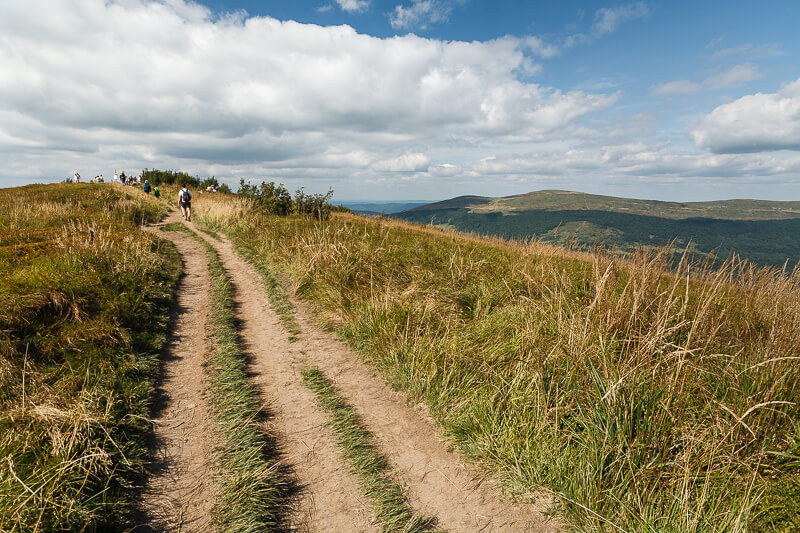
What is the difference between a natural reserve and a national park?
When walking in a Polish forest we often don’t wonder what rules should be followed in it. The situation becomes more complicated, when we enter a national park, a landscape park or a natural reserve. People often cannot tell the difference between those three spaces. Our knowledge is often limited to knowing that they are protected. There are, however, various types of protection. Strict protection is the highest level, where interfering with the natural space is prohibited. Active protection allows protective and maintenance actions. While landscape protection is the least restrictive type, which allows commercial forestry, agriculture and fishing activities to be conducted in the area in a manner which respects its needs. The most restrictive form of nature protection, supervised by the Ministry of Environment, is the national park. A given area must meet certain requirements to be considered a national park. It must have a minimum surface area of 1000 ha. It should be distinguished by natural riches of special value and founded to protect them. It may also be set up to preserve diversity and ensure safety of endangered or dying species. All 23 national parks in Poland are available for tourists in areas designated for that purpose. There are special routes set out for visiting tourists to which you have to stick; any deviations are prohibited. National parks are always placed under strict protection or partial protection regulations. Rules and regulations in force may undergo changes, as the protection plans are updated periodically. Areas of particular natural value, which do not meet the requirement of having a surface area of over 1000 ha are made natural reserves. They are set up by Voivods’ regulations. There are several kinds of reserves: forest, floral, peat land, fauna, landscape, geological, water, steppe and meadow. The object of protection may be the whole natural area or only its part. The most important thing is that in a reserve you encounter unchanged, natural territories, as well as plant and animal habitats of special value. The biggest number of those areas can be found in Mazowieckie Voivodship, the smallest in Opolskie Voivodship. Each reserve regulates the type of protection within a scheme agreed periodically. Areas under strict protection are e.g. Strict Protection Area Dębina in Drawa National Park in Zachodniopomorskie Voivodship or Strict Protection Area “Pyszna, Tomanowa, Pisana” in Western Tatra Mountains – you can enter these areas for research purposes only. The rest is made available for tourists. The lowest level of protection is established in landscape parks, which are created to preserve landscape, history, culture and nature. They are usually employed for touristic and recreational purposes. They often have well developed tourist infrastructures. Dolina Słupi Landscape Park and Góry Sowie Landscape Park in Dolnośląskie Voivodship are examples. Irrespective of the type of protection, and whether you go to a reserve or a park, the same rules are in place. You cannot damage plants in protected areas, neither can you catch or kill animals, nor destroy any elements of animate or inanimate nature. Please note, that you cannot pick mushrooms or fish there either. You should behave quietly, so as not to disturb the animals. The fine for breaching the regulations could amount to even PLN500. It is regulated by the provisions of the Nature Conservation Act of 2004. Before you enter a park or a reserve, it is best to familiarise yourself with the regulations in force to prevent bearing the consequences.
Wszystkie pola:
array(19) { ["key_words"]=> string(0) "" ["meta_title"]=> string(77) "What is the difference between a natural reserve and a national park?, Poland" ["meta_desc"]=> string(0) "" ["watermark"]=> string(0) "" ["interesting_places"]=> string(40) "Visit Poland - Places To Visit In Poland" ["author"]=> string(16) "Agnieszka Banach" ["latlng"]=> array(3) { ["address"]=> string(0) "" ["lat"]=> string(16) "4.42199707031251" ["lng"]=> string(16) "-15.597289502621" } ["highlight_search"]=> bool(false) ["is_news"]=> bool(false) ["is_home_page_title"]=> bool(false) ["is_poradnik"]=> bool(false) ["is_sprzet"]=> bool(false) ["is_outwear"]=> bool(false) ["use_video"]=> bool(false) ["video"]=> string(0) "" ["show_map"]=> bool(false) ["country"]=> string(3) "POL" ["meta_key"]=> string(0) "" ["home-visible"]=> bool(false) }key_words:
meta_title: What is the difference between a natural reserve and a national park?, Poland
meta_keys:
meta_desc:
watermark:
interesting_places: Visit Poland - Places To Visit In Poland
author: Agnieszka Banach
latlng: Array
highlight_search:
is_news:
is_home_page_title:
is_poradnik:
is_sprzet:
is_outwear:
use_video:
video:
show_map:
Pola do umieszczenia w nagłówku
meta_title: What is the difference between a natural reserve and a national park?, Poland
meta_keys:
meta_desc:
Pola do umieszczenia w treści
watermark:
watermark:
author: Agnieszka Banach
meta_desc:




